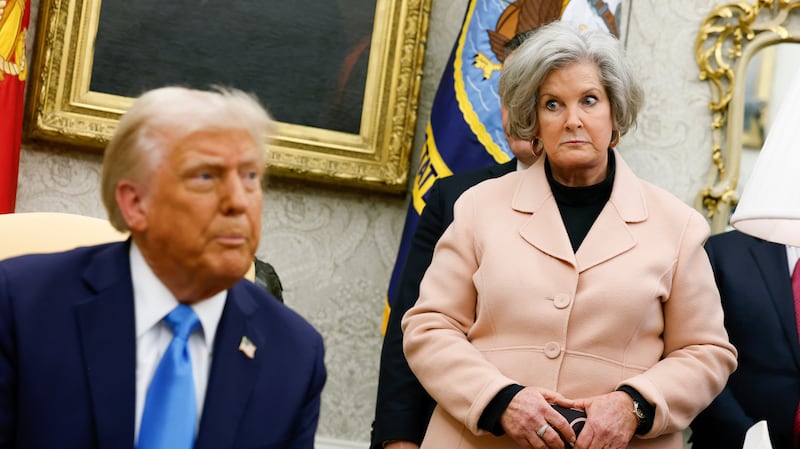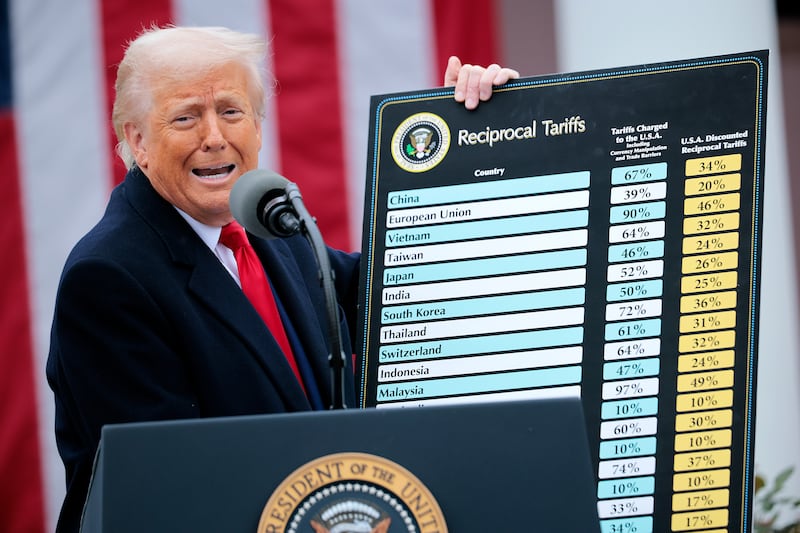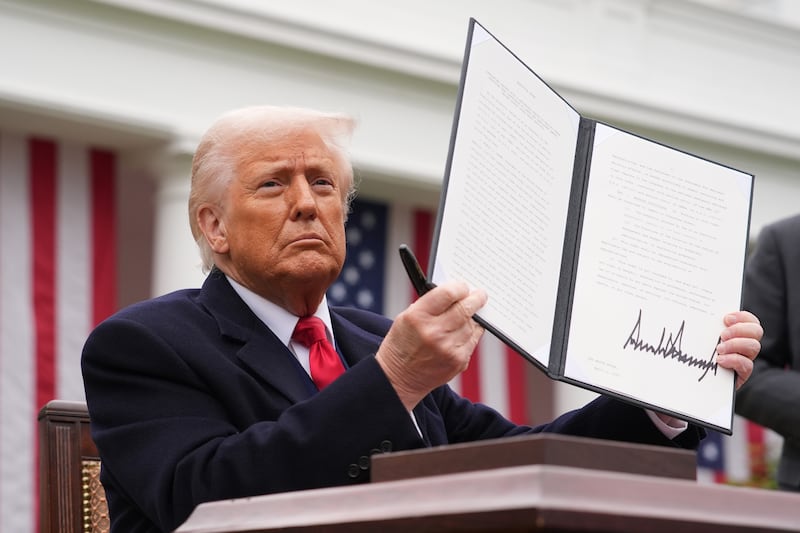President Donald Trump‘s top aides spilled the beans Wednesday about how they convinced him to back off his sky-high tariffs on China.
They boasted to The Washington Post that they used data showing how his base of support—in particular truckers and longshoremen—would be hurt by the levies to change his mind.
Trump announced a “total reset” in relations between China and the US on Monday after the countries agreed to a 90-day pause on their matching tariffs.
Behind the scenes, the agreement was reportedly the result of top aides speaking up, according to several officials who spoke anonymously with the paper.

A growing number of largely Trump supporting demographics across the country had started to feel the pinch of heightened prices—leading to increasingly vocal frustrations with Trump.
White House Chief of Staff Susie Wiles and Treasury Secretary Scott Bessent, along with a handful of other aides, reportedly warned Trump that his MAGA base was in danger of turning against him if the tariffs did not come down, the Post reported in a story penned by two of the paper’s economic reporters, as well as its White House correspondent.

“The key argument was that this was beginning to hurt Trump’s supporters — Trump’s people,” one person briefed on the talks told WaPo. “It gave Susie a key window.”
The warning worked. Now the team is negotiating with China, which led to a compromise last weekend as the U.S. agreed on a partial deal to reduce tariffs.
A White House official told the Post that multiple factors contributed to the negotiations, but the president was also largely influenced by the backlash of his devotees.

However, Trump’s quick reversal was far from the first 180 he’s made since his term started. Trump has changed his tariff policies over 50 times, announcing new or revised policies each time, according to WaPo. Before Trump, the fastest period of change for U.S. trade policy was from 1806 to 1812, with policies changing only every year.
Dartmouth economist Douglas Irwin called the one-a-day or one-a-week measures implemented by Trump are “unprecedented” and “overwhelming.” His tariffs are aimed at some of the country’s closest allies, including Canada. More than six policies didn’t last more than a week before they were changed. He changed his mind on auto, steel and aluminum, and agriculture and energy at least three times each. Some tariffs didn’t last a day, with the Trump administration claiming that the policy had already achieved its intended result.
Yet Trump has slowly learned that his lofty goals are impossible without serious political and economic blowback, including from his loyalists.
“The reason why the tariffs go up and come back down is businesses or markets are pressuring him to back off,” Irwin said. “The volatility is just reflecting the difficulty of achieving the objectives in a very short span of time.”
Although the White House has claimed that it is working on dozens of trade deals with countries, Trump’s team has actually only announced a trade deal with one country: Britain. But critics say the ally only offered minimal concessions, such as promising to purchase more U.S.-made beef. The U.S. already has a trade surplus with Britain.

“The only special interest guiding President Trump’s decision-making is the best interest of the American people,” said White House spokesman Kush Desai.
The post Aides Spill on How They Convinced Trump to Back Off China Tariffs appeared first on The Daily Beast.




